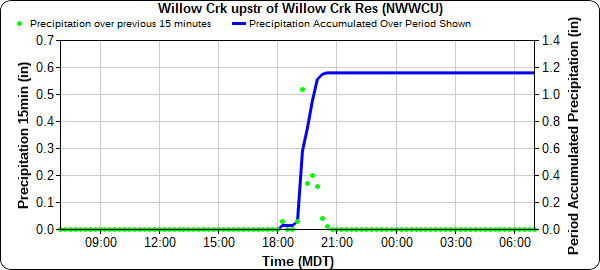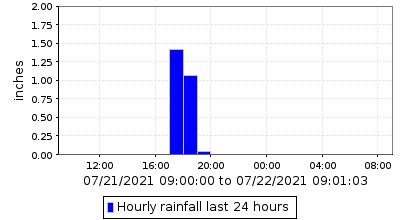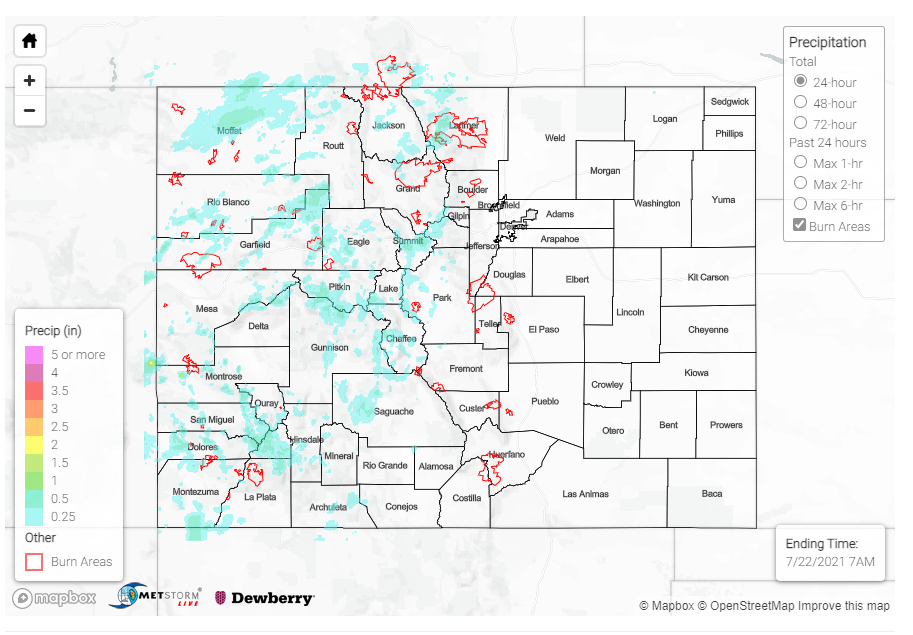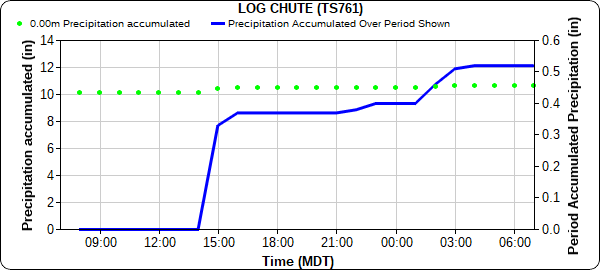Issue Date: Thursday, July 22, 2021
Issue Time: 9:45 AM MDT
Summary:
Yesterday saw heavy rain across the State, but most significantly in the San Juan, Central, Northern and Front Range Mountains, as well some of the Urban Corridor and Palmer Ridge.
Flash flood warnings were issued for both the Cameron Peak and East Troublesome burn scars in the Northern Mountains. Multiple debris flows and flooding was reported over CO-125 in Grand County after heavy rain caused runoff on the East Troublesome burn scar and stranded travelers. The highway is still closed as of this morning. Over 1 inch of rain fell on the East Troublesome burn scar in a little under 2-hours, as seen in the time series plot from Willow Creek Reservoir.
Flooding was not reported from the Cameron Peak burn scar on Wednesday, though the river remains closed after deadly floods on Tuesday.
Another flash flood was reported in Coaldale, in Fremont County, on the Hayden Pass burn scar. Water and Debris from Butter Creek was reported on County Road 40. Rainfall observations around this area range from 0.65-0.85 inches.
A flash flood was reported in Westcliffe as well, though unrelated to a burn scar. Between 1.25-2.04 inches of rain was reported between CoCoRaHS observers and CoAgMet gauges. Street flooding occurred in town and Hermit Road was cut off from Highway 69 to 96 from flood waters. One CoCoRaHS observer, who recorded 2.03 inches, left the following remark:
This may be the biggest rain event I’ve recorded here. I filed both hail and significant weather reports yesterday. The storm seem to grow above us, first with cloud lightning, then high winds and driving rain, mixed with hail. It looked like hurricanes I’ve experienced. One of my hoop houses, very exposed to the south winds blew apart. Leaves on my beans there were stripped. Other leaf damage was widespread. Our front area flooded. Reports from in town showed overwhelmed street drains. I’ll get out soon to see how our gravel and dirt roads fared.
Along the Palmer Ridge over 2 inches of rain fell, including 2.52 inches in Southeast Douglas County picked up by a MHFD gauge, seen below. The Antelope Creek station had two hourly observations of 1.42 and 1.06 inches, for a 2-hour total of 2.48. According to Precipitation Frequency Estimates from NOAA Atlas 14 in this area. 1.42 inches in a single hour is greater than a 10-year rainfall event, and 2.48 inches in 2-hours is over a 50-year rainfall event!
Several locations across the Mountains and Palmer Ridge received nearly an inch of rain yesterday, including Floyd Hill, Silverthorne, Buena Vista, La Veta, and Capulin. Heavy rain and floods were not the only risk from storms yesterday – large hail, up to 0.70 inches, was reported in Pagosa Springs yesterday. For rainfall estimates in your area, check out the State Precipitation Map below.
Click Here For Map Overview




